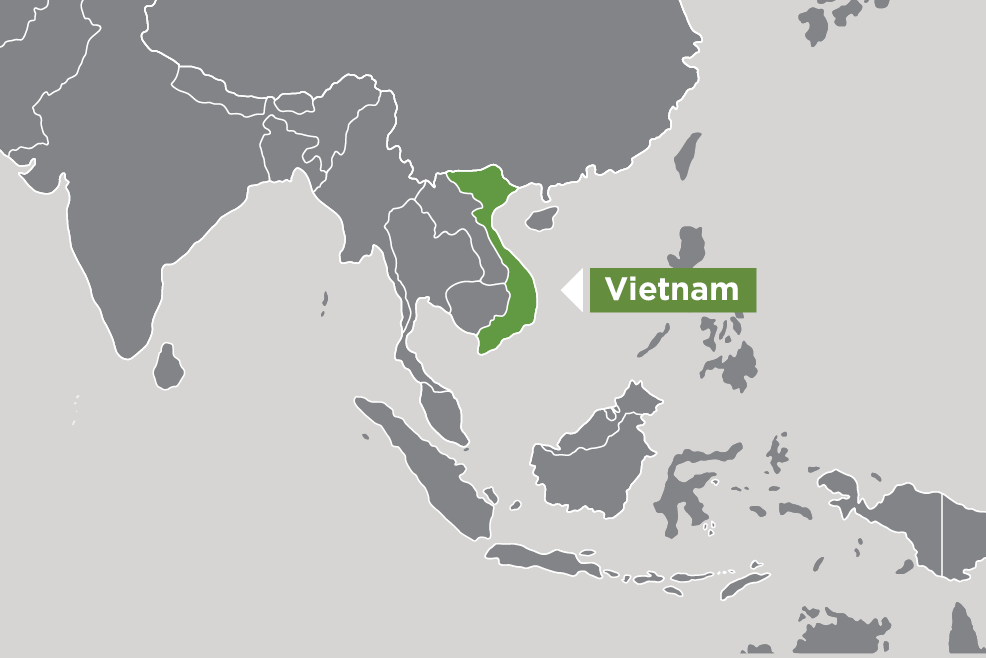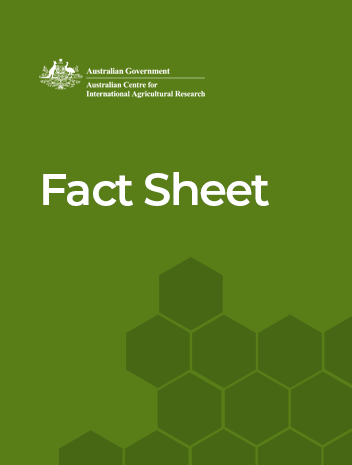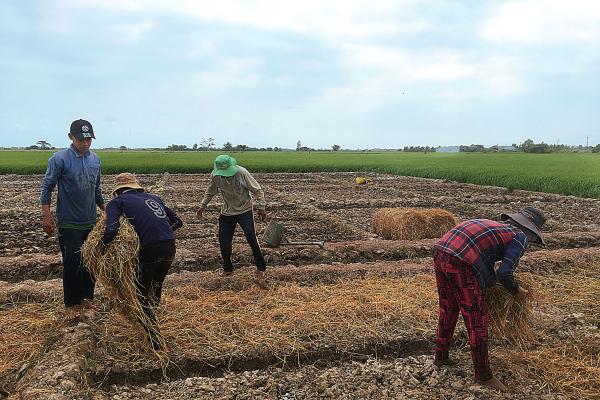Overview
This project aims to increase production and profitability of saline affected crop production systems in the Mekong Delta and to create a capacity legacy to enable these systems to adapt to ongoing climate change.
Climate change induced sea level rise and changes to seasonal rainfall patterns has resulted in decreased freshwater availability and saline intrusion during the dry season in the Mekong River Delta which is occupied by 75% of agricultural land.
The consequences of this have led to severe crop losses with up to 70% of rice being salt affected and 30% of the crop yielding no grain. This represents a significant loss of income to thousands of farmers, and it is predicted that such losses will increase in frequency, magnitude and spatial extent into the future.
To address this issue, the project aims to foster productive and profitable agricultural adaptation to mitigate current issues, which will contribute to safer and more sustainable food production, rural livelihoods and capacity-building of scientific, extension and farming stakeholders.
Expected project outcomes
- Characterising the impact of saline water intrusion on crop-based farming systems (water, soil, crops, people, markets);
- Developing and evaluate crop diversification and soil management options for saline affected-areas;
- Describing and analyse market opportunities and policies for adaptive transformation of cropping systems in the MRD; and
- Developing and promote spatially targeted management practices which build adaptive capacity and optimise farm livelihoods in a changing environment.
Summary of achievements to date
2021–22
- Training of local government staff and farmers on the impact of salinity on plant production and methods to measure salinity in soil and water enabling farmers to avoid irrigating with saline water and diagnose salinity risks.
- Glasshouse and field experiments have identified suitable crops (e.g., quinoa, maize, beetroot, watermelon) as an alternative to rice in the dry season.
- Field experiments have demonstrated the beneficial use of mulches to decrease soil salinity and increase production of upland crops when rice cannot be grown.
- The use of Chameleon soil water sensors has enabled water use to be halved without loss of yield, and reduce time spent irrigating, representing significant savings in fuel, water and labour costs.
- Farmers have earned an additional source of income from selling upland crops e.g., maize and beetroot. These crops have a 2- and 20-fold increase in profit compared with rice, respectively.
- The project is building capacity of research teams with junior staff being mentored to conduct quality, multidisciplinary science. The project continues to foster the postgraduate training of local government staff from rural areas via enrolment in a Master of Science course utilizing the project as a resource.
- Youth perceptions of the environmental, economic and social pressures faced due to climate change and COVID-19 were studied with emphasis on perceptions of gender roles, career prospects for youth, family farming activity and decision making. Though gender roles differ, youth aspire for a more balanced representation of roles and opportunities.
- Remoted sensed data is being used to study the influence of climate change on land use change from rice production within target provinces.
- Three project staff were awarded ACIAR Alumni Research Support Facility (ARSF) grants to support their research in socioeconomics.





